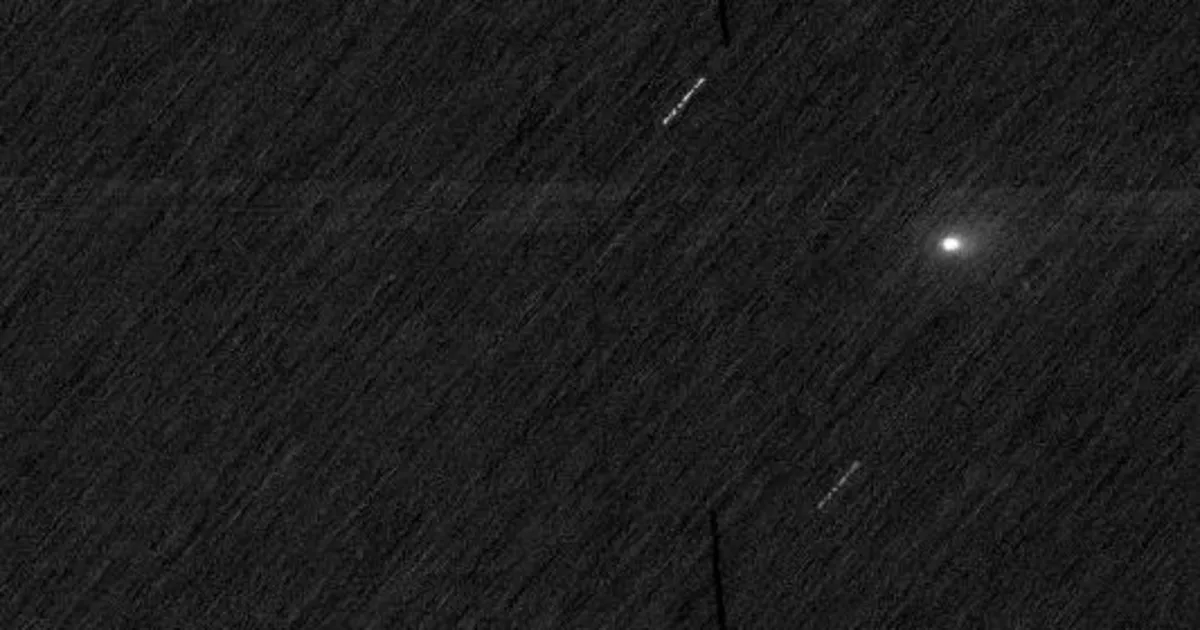
A rare interstellar comet, known as 3I/ATLAS, has made headlines as it closely approached Mars last week. This event marks only the third time in history that a comet from outside our solar system has been confirmed to enter our cosmic neighborhood, according to the European Space Agency.
On Friday, two Mars orbiters captured stunning images of the comet, revealing a bright, fuzzy white dot against the backdrop of distant stars. At the time of the observation, 3I/ATLAS was approximately 18,641,135 miles away from Mars. These photographs highlight the significant capabilities of the orbiters, although the principal investigator of the CaSSIS camera, Nick Thomas, noted that this observation was particularly challenging. "The comet is around 10,000 to 100,000 times fainter than our usual target," Thomas explained in a statement.
Since its discovery in July, comet 3I/ATLAS has been the subject of multiple observations. In early August, both NASA and the European Space Agency released images taken by the Hubble Space Telescope, showcasing the comet's features from a distance of about 277 million miles. Additionally, a recent image captured last month displayed the comet's growing tail, which is now streaking across our solar system.
NASA has announced that 3I/ATLAS will make its closest approach to the Sun in late October. During this time, it will pass between the orbits of Mars and Earth. Observers can expect to see the comet remain visible through September, but as it gets closer to the Sun, it will become increasingly difficult to observe. After this period, the comet is anticipated to reappear on the opposite side of the Sun in early December.
The European Space Agency confirmed on Tuesday that scientists will continue to analyze data from both orbiters. By combining multiple images from Mars Express, they hope to detect the faint presence of comet 3I/ATLAS in the coming days.
As astronomers and space enthusiasts eagerly await more insights on this celestial phenomenon, 3I/ATLAS continues to capture the imagination of those interested in the wonders of our universe.